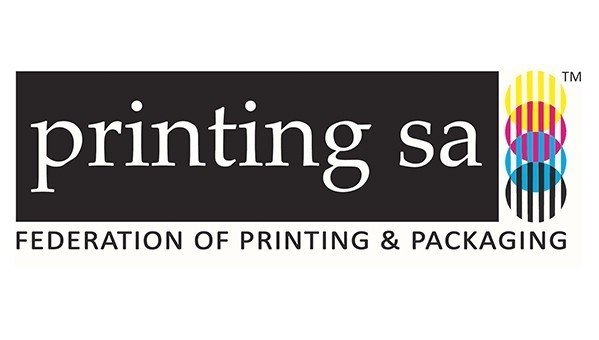The 5th annual Printing SA Conference will be hosted at the upcoming Africa Print Expo, co-located with the Sign Africa, FESPA Africa and Africa LED Expos, on 14 September, at Gallagher Convention Centre, Midrand.
SAIP members qualify for a 25% discount and will earn 2 CPD points for attending each topic (8 CPD points can be earned in total). Printing SA members qualify for 10% discount. If a member of both, the highest discount of 25% applies.
Speakers and topics include:
Welcome and State of the Industry – Steve Thobela, CEO, Printing SA
Thobela joined Printing SA as deputy CEO in January 2014 and a year later was appointed CEO upon the retirement of his predecessor. He took the helm at a time when the industry was grappling with challenges, which he continues to work tirelessly to alleviate. He started his career as a typographer, and was Regional Chairman of the Media Workers Association of South Africa. He worked in the print production departments of the Pretoria News, Perskor, the Sowetan and The Newspaper Printing Company before becoming Operations Manager of Independent Newspapers Cape. He also served as the founding General Manager of The Mandela Rhodes Foundation. Prior to joining Printing SA on a full time basis, he served as Director of Print Production at the University of South Africa, UNISA. Thobela is a Trustee of the Printing Industry Pension and Provident Fund for South African Typographical Union (SATU) members and and also a Board member of the FP&M SETA.
Industry Waste Management Plan – Shabeer Jhetam, executive director, Packaging SA
This topic looks at the submission of an Industry Waste Management Plan (IWMP) for paper and packaging as requested by the Minister of environmental affairs. The IWMP needs to be submitted to the Minister by 5 September 2018. Key focus areas of the plan will include increasing diversion of paper and packaging from landfill, transformation in the waste management sector and job creation.
Jhetam entered the recycling and waste management sector in 2002 following a 13 year career, and various management positions, within Iscor. Shabeer then led the commercial and marketing functions for beverage can recycling company, Collect-a-Can, for four years. In 2006, he made a strategic career move and took on the responsibility of driving and heading The Glass Recycling Company (TGRC), a company committed to increasing glass recycling in South Africa while uplifting impoverished communities through job creation and skills development in the recycling sector. In March 2018, Jhetam was appointed as the Executive Director of Packaging SA. Since his appointment, a significant focus is on developing the IWMP for the paper and packaging sector.
FESPA Print Census Results – Sean Holt, executive director, FESPA
The FESPA Census is the largest data gathering project in the wide format printing industry. Developed through FESPA's Profit for Purpose programme, the information is gathered and analysed on a regular basis for use by the worldwide printing community. Holt will share the outcomes of the last FESPA Print Census and look ahead to the next, exploring how and why it forms the backbone of strategic business planning, helping printers to spot emerging trends and grow their businesses.
Holt joined FESPA in 2013 after a lengthy career in various sports organisations, including ten years at board level, culminating as CEO of the Chartered Institute for the management of Sport and Physical Activity. He was also director of London and Olympics for Sport England, the national sport funding body. He has also worked in local government and been a non-executive director of Culture South East, South East Tourism and a member of the Regional Assembly.
Demystifying The FP&M SETA Workplace Skills Planning And Discretionary Grant Application Processes – P.K. Naicker, general manager: Research, Planning and Reporting at FP&M SETA
The Workplace Skills Plan (WSP) is one of the most powerful tools delivered to employers through skills development legislation. It is aimed at business expansion and sustainability. It is designed to encourage employers to provide data to the SETA on their workforce and skills needs. The data needs to be accurate and well prepared so that the SETA can make use of this data to establish skills needs in the sector.
The SETA Grant Regulations provide the basis for the SETA to allocate and disburse grants in order to improve quality and quantity of labour market information. The intention of the legislation and regulations is that mandatory grants are used as an incentive to employers to plan and implement training for their employees and create training and work experience opportunities for unemployed people.
SETAs must address skills that the sector has identified as being scarce and critical. It is important to emphasise that discretionary grants are just that – discretionary. The purpose of the discretionary grants is for the SETA to use them to implement their SSP and to contribute to national targets in order to develop the sector. The presentation will provide an overview of the legislation and implementation processes relating to workplace skills planning and discretionary grants.
Naicker has extensive experience in quality assurance and research relating to education, training and skills development. Naicker was a former Head of Department of languages at a secondary school and joined the then CTFL SETA as Senior Manager: Education and Training Quality Assurance in 2006. He also served in the capacity of Chief Executive Officer of the CTFL SETA between 2008-2011, before it was amalgamated into the FP&M SETA.
How to Print the eXpected – Colour Management – Laura Minter, director at DigitalView
What you see is not necessarily what you get. How to control colour quality from the start of the design process right to the end when the product ends up on the shelf for your customer to appreciate. This is an introduction to the training designed for print and packaging professionals seeking to build their knowledge of colour management through hands-on training and practical applications. Colour management addresses a fundamental problem with the way we use numbers to represent colour digitally. The colour modes we most often use – RGB and CMYK – don't specify colours unambiguously. Rather, they have their roots in the control signals that we send to our colour reproduction devices – displays, desktop printers, or even printing presses – to make them produce something that we then can see and interpret as colour. The problem is that each device will produce a different colour when we feed it the same set of RGB or CMYK numbers. So the scanned image doesn't look like the original when viewed on screen, and your final printed output doesn't look like either the original, or the on-screen rendition.
Laura Minter is a Photolithographer by trade who specialised in colour retouching. She started DigitalView 21 years ago with her husband Mark Minter. DigitalView provides colour quality management systems for some of the worlds most colour critical brands, and technical training for some of the worlds best print and packaging suppliers. Their key strengths are implementation of global print quality standards, including ISO 12647, technical training and fine tuning of colour management systems.
For speaker times, more information and to book your seat, visit our conference page.
Email any enquiries to printingsaconference@africaprint.com.





















